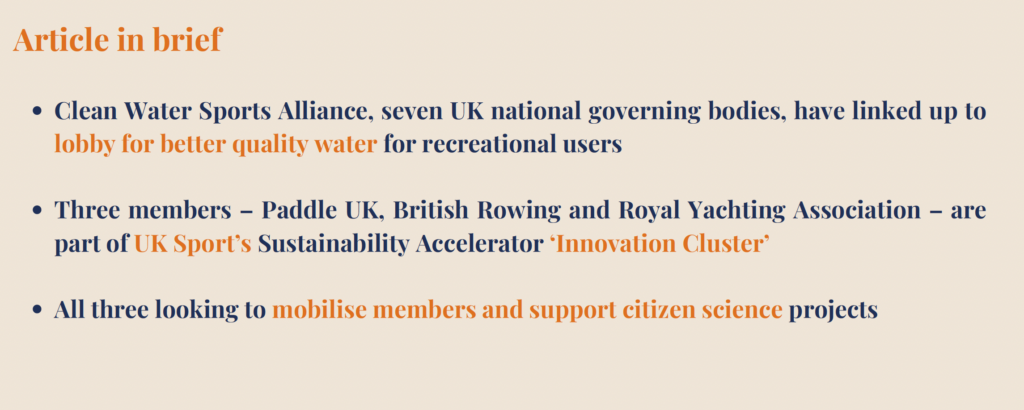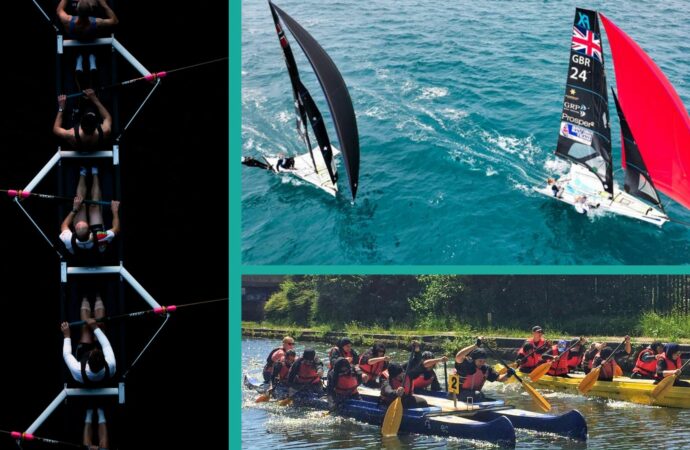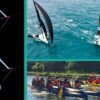Clean Water Sports Alliance trio talk to The Sustainability Report

Imagine going to work and expecting to get sick while on the job. That every time you walked into the office or onto the shop floor that your environment would make you physically ill.
What if you were told that some of the high-performance athletes that you see competing at Olympics, World Championships and other major events face that exact scenario?
When Beth Gill took to the stage at the first International Canoe Federation (ICF) Sustainability Forum at the Canoe Slalom World Championships in London last year, she introduced delegates to ‘Trent Belly’ – the sickness she experiences while training on the polluted River Trent.
Gill, a British world marathon champion, even recounted a time when a king size mattress floated past her as she paddled up the river in disbelief.
And she’s not the only one facing these risks. In England alone, 85% of river stretches fall below good ecological standards, according to the Rivers Trust. Globally, the UN estimates that three billion people are prone to disease because of the water quality of their rivers, lakes and groundwater.
Both elite and recreational paddlers are taking a chance with their health when they go onto the water. In the last week alone, a large citizen testing project across Britain found that 89% of rivers in the south-east of the country had unacceptable levels of nutrient pollution.
Chantelle Grundy, Paddle UK’s access and environment lead, says people are worried.
“We’re getting a lot more questions from our members and they’re a lot more concerned about the perception of whether or not it’s safe to actually get into the water,” she tells The Sustainability Report.
“We want the government and stakeholders to go further, faster on pollution within our waterways, but we want to ensure we give guidance to our communities as well, because we want to encourage people to go out and enjoy the waters. We don’t want the pollution side of things to become a barrier.”
Three asks
It’s a common theme for many water-based sports in Britain. So much so that, along with six other national governing bodies of sport, Paddle UK founded the Clean Water Sports Alliance to call for clean open water for people to enjoy.
Together with British Rowing, British Triathlon, the Angling Trust, GB Outrigger, Royal Yachting Association (RYA) and Swim England, the Alliance has made three asks:
– For regulators to be adequately funded to monitor, investigate and hold polluters to accounts
– Enable access to real-time water quality information all year round
– Advocate a change from ‘bathing waters’ to ‘recreational waters’ within government policy
The latter is crucial, says Rachel Dulai, special projects lead at British Rowing, because bathing water status only applies to areas of water where 100 or more people swim, which isn’t applicable to many of the sports in the Alliance.
It all came to a head very publicly in rowing when high levels of E coli were found in the River Thames during the Boat Race – one of the sport’s most high-profile events. The University of Oxford rowing coach, Sean Bowden, called the river’s condition a “national disgrace”, with water quality leading more than 1,700 pieces of media coverage globally.
Dulai explains that there’s a fine line between “raising concern” by conducting water quality tests to ensure awareness and safety, and worrying people to the point that they won’t participate.
“I’m seeing reports from our health and safety officer, and quite a lot is about sickness. But the more worrying thing is infections getting in through the hands,” Dulai says. “We’re trying to do the right things, not just for the sport and the environment, but all water users everywhere.”
Move to the next level
Working in collaboration to restore access to clean water is one of the six pillars of British Rowing’s sustainability strategy, and the organisation has been putting pressure on water companies to improve their record while developing guidance for rowers on navigating poor water quality.
Three of the seven members of the Alliance are also part of the Innovation Cluster of UK Sport’s sustainability-focused Accelerator Programme, which is designed to help all UK Sport-funded national governing bodies work towards net zero by 2040.
Alongside Paddle UK and British Rowing, the RYA is the third water-based sport in the Innovation Cluster, which is a group of sports organisations that have done the basics (sustainability strategies produced, carbon footprints complete or in progress) and want to move onto the next level.
British Cycling, British Equestrian and the British Mountaineering Council (BMC) make up the group, and Phil Horton, environment and sustainability manager at the RYA, says that initiatives like the Clean Water Sports Alliance is indicative of the approach to new ideas and collaboration that the cluster is trying to foster.
“It’s strength in numbers, with seven governing bodies coming together, which is quite unique,” says Horton.
“We’ve had meetings with the Environment Agency, with Water UK, and I think we’ve really made our voices heard. We’re going to engage more on the citizen science side and try to collect more data.”
Citizen science
Mobilising members and recreational participants to get involved in citizen science is one of the positive aspects to come out of a challenging situation all three sports find themselves in, Grundy and Dulai agree. The seven sports in the Alliance represent around 450,000 members – a significant group of people to engage and activate.
Sudbury Rowing Club, Dulai says, has helped its stretch of the River Stour achieve bathing water status through collaboration with its local community. At the British Rowing Masters Championships this month, the Animal and Plant Health Agency taught participants how to detect and deal with invasive species on equipment. And, at the Junior Championships in July, rowers will learn about water testing.
In the fortnight covering late-May and early-June, The Big Paddle Cleanup brought thousands of paddlers together to clear their waterways of pollution. During the 2023 events, 2,600 paddlers managed to fill 1,800 large sacks with 6,767 plastic bottles, 2,739 glass bottles, 4,403 cans and 7,682 food packaging items.
Grundy is keen to mobilise the community more in terms of testing, but cites challenges around the logistical side collecting samples and sending them to labs, as well as the continuous movement of water, as barriers to more effective citizen science projects.
However, Grundy, Dulai and Horton are keen to lean in on innovation to overcome these drawbacks.
“One of the challenges is, if you’re testing for bacteria, it takes a few days for it to be sent off to a lab and then for it to come back again, but we are exploring new technologies which might reduce that time period and make it more accessible,” says Grundy.
“So it may be that over the next few years, as technology comes forward, that it might become business as usual for a club to be testing their local waters to see what’s actually happening.”
Opt into our weekly newsletter for exclusive content focused on sustainability strategy, communication and leadership for sport’s ecosystem.










Leave a Comment
Your email address will not be published. Required fields are marked with *